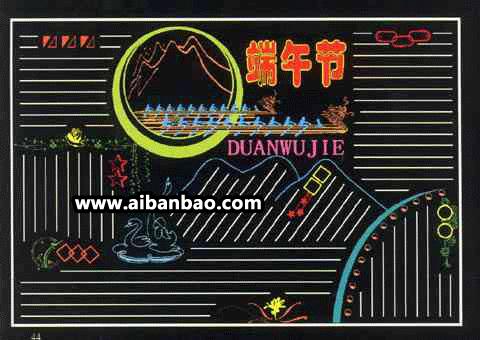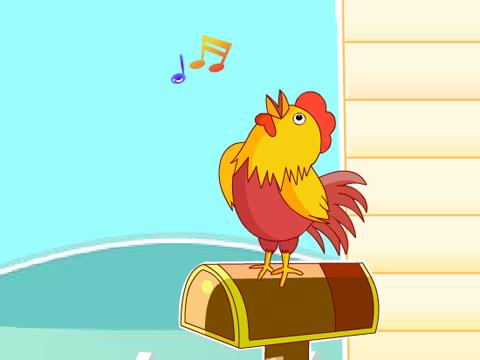中国传统节日手抄报(共10篇)
来源:手抄报 2019-02-08
篇一:中国传统节日手抄报
中国传统节日手抄报
应该看到,这些流传了上千年的传统节日,以及节日所具有的伦理道德和审美内涵,在今天仍具有重要的社会与人生意义.为什么在中国“现代”起来之后,更需要强调这些节日并认为应当将它们修订为国家法定节日?我们还要看到这样一个事实:与传统社会人们有着大量闲暇时间不同,在现代市场经济生活方式和科层制管理方式日益普及、社会生活实现规范化和理智化之后,传统节日如没有相应的国家立法形式予以保护,它不可避免就会因为时间保证的短缺而受到冲击.因此,以立法的形式,将中国五大传统节日———春节、清明、端午、中秋、重阳等全部或大部,从单纯的民间节日形式上升为假期保护的国家节日,使人们有时间在这样的节日里,从各种节日仪式中感受中国自身的历史传统,享受节日所带来的心灵愉悦,在今天就显得非常必要.
篇二:中国传统节日手抄报
“保护传统节日,弘扬传统文化”为主题的手抄报,请你为你的报纸设计三个栏目名称___ ____ ____ 快
耳熟能详的传统节日、保护传统节日,弘扬传统文化的意义、处理好外来节日与传统节日的关系
篇三:中国传统节日手抄报
中国传统节日的英语介绍
我做手抄报
元旦 New Year" s Day Jan.1
国际劳动妇女节 International Working women" s Day
(wornen"s Day) Mar.8
国际劳动节 nternatlonal Labor Day
(May.Day) May.1
中国青年节 Chinese Youth Day May.4
国际儿童节 International Children"s Day
(Children"s Day) June .1
中国共产党诞生纪念日
( 党的生日) Anniversary of the Foundlng of the ChineseCommunist Party
( the Party" s Birthday) July .1
建军节 Army Day August .1
教师节 Teachers ,Day Sept.1
国庆节 National Dey October.1
中国传统节日
春节 the Sprlng Festival ( New
Yearls Day of the Chinese lunar calendar) 农历正月初一
元宵节(灯节) the Lantern Festival 农历正月十五
清明节 the Qing Ming Festival 四月五日前后
端午节 the Dragon-Boat Festiva 农历五月初五
中秋节 the MidAutumn Festival
(the Moon Festival) 农历八月十五
重阳节 the Double Ninth Festival 农历九月初九
元旦(1月1日)NewYear"sDay
春节(农历一月一日)theSpringFestival
元宵节(农历一月十五日)theLanternFestival
国际劳动妇女节(3月8日)InternationalWorkingWomen"sDay
植树节(3月12日)ArborDay
邮政节(3月20日)PostalDay
世界气象节(3月23日)WorldMeteorologyDay
清明节(4月5日)ChingMingFestival;Tomb-sweepingFestival
国际劳动节(5月1日)InternationalLabourDay
中国青年节(5月4日)ChineseYouthDay
护士节(5月12日)Nurses"Festival
端午节(农历五月初五)theDragonBoatFestival
国际儿童节(6月1日)InternationalChildren"sDay
中国共产党成立纪念日(7月1日)theParty"sBirthday
建军节(8月1日)theArmy"sDay
中秋节(农历八月十五)Mid-autumn(Moon)Festival
教师节(9月10日)Teachers"Day
重阳节(农历九月九日)Double-ninthDay
国庆节(10月1日)NationalDay
除夕(农历十二月三十日)NewYear"sEve
篇四:中国传统节日手抄报
中国传统节日手抄报(英语) 【大标题、英语文章(附中文)、节日介绍】 英语【中国传统节日手抄报】
可以试着看少年报或者其它青少年报纸是怎么排版的,学一下排版.
大标题:"Fun English"(玩转英语)、"Every day English"(每日英语)等等
英语文章你可以去书城买几本外国书刊,文章多得是,最好是关于节日的.
篇五:中国传统节日手抄报
有关中国传统节日手抄报的题目~【中国传统节日手抄报】
是大标题吗?
是的话可以简单易懂,就如“我国的传统节日”就好了,大标题最主要是突出主题,遵循传统就好
小标题的话可以依你做的内容来定
这种比较明确的题目其实很好起名字的
篇六:中国传统节日手抄报
求一张英语手抄报主题可以使春节或元宵节等中国传统节日求大神解救
Spring Festival is the most important festival in China .
春节是中国最重要的节日
It’s to celebrate the lunar calendar ‘s new year .
它是为了庆祝农历新年
In the evening before the Spring Festival ,families get together and have a big meal .
在春节前夜,家人聚在一起享用丰盛的一餐
In many places people like to set off firecrackers .
在许多地方人们还放鞭炮
Dumplings are the most traditional food .
饺子是最传统的食物
Children like the festival very much ,because they can have delicious food and wear new clothes .
孩子们非常喜欢春节,因为他们可以吃好吃的东西和穿新衣服
They can also get some money from their parents.
他们也可以领到压岁钱
This money is given to children for good luck .
给孩子的这些钱是为了(来年的)好运气
People put New Year scrolls on the wall for good fortune .
人们也用贴年画的方式来乞求好运
The Spring Festival lasts about 15 days long .
春节持续近15天
People visit relatives and friends with the words “Have all your wishes ”.
人们拜访亲戚朋友时会送上一句"万事如意"
People enjoy the Spring Festival ,during this time they can have a good rest .
人们享受春节,在这段时间他们可以好好休息一下
篇七:中国传统节日手抄报
【英语手抄报】
题目是《中国的传统节日》急!是英文的
Spring Festival
----------------------------------------------------------------------
The most important holiday in China is Spring Festival, it is also known as the Chinese New Year. To the Chinese people, it is as important as Christmas to people in the West. Spring Festival symbolizes the great unity, prosperity and prospect for the future.
The dates for this annual celebration are determined by the lunar calendar rather than the Gregorian calendar, so the timing of the holiday varies from late January to early February.
Preparations for the New Year begin the last few days of the last moon, houses are thoroughly cleaned, debts are repaid, hair is cut and new clothes are purchased. People put spring festival distiches onto the door or wall facing the door in the sitting room. This is done to express the people"s wish for a peaceful and happy new year. In many homes, people burn incense(香) at home and in the temples to pay respects to ancestors and ask the gods for good health in the coming year.
Legend -- Story of Nian “年”的故事
----------------------------------------------------------------------
The Spring Festival is the grandest festival for the Chinese. The Spring Festival is also called "Nian", but who knows the term, Nian, was once the name of a furious monster. they lived on human beings in the ancient time. How the Festival has some relationship with the monster lies in a story about the origin and development of the Spring Festival.
The legend says, long ago, there was a monster called Nian. It was born to be very ugly and ferocious(凶猛的), which looked like either dragons or unicorns(独角兽). On the first and the 15th of each lunar month, the monster would come down from the mountains to hunt people. So people were very much afraid of it and locked their doors early before sunset on the days of its coming.
There lived an old wise man in a village. He thought it was the panic in people that made the monster so bold and furious. Thus the old man asked people to organize together and to conquer the monster by means of beating drums and gongs, burning bamboo, and lighting fireworks in purpose of making large noises to threaten the hateful monster. When he told people about the idea, everybody agreed on it.
At a moonless and freezing cold night, the monster, Nian, appeared again. The moment it opened its mouth at people, burst out the frightening noises and fire made by people, and wherever the monster went, it was forced to back off by the terrible noises. The monster couldn"t stop running until he fell down with exhaustion. Then people jumped up and killed the evil monster. Savage as the monster was, he lost in the end under the efforts from the cooperation of people.
Since then, people have kept the tradition by beating drums and gongs, and lighting fireworks at the coldest day in winter to drive the imagined monsters away and to celebrate the victory over it. Today, Nian refers to the New Year"s day or the Spring Festival. People often say Guo Nian, which means "live the festival." Furthermore, Nian also means the year. For an example, the Chinese often greet each other by saying Xin Nian Hao, which means Happy New Year! Xin means new and Hao means good.
Story of playing fireworks
----------------------------------------------------------------------
In China, people play to express joy and happiness during the Spring Festival and on other auspicious occasions(喜庆日子). Fireworks playing is regarded as one of China"s most important customs.
The history of firework can be dated back to(追溯) over 2,000 years ago. The earliest firework was called Ting Liao(庭燎), it was made up of something like bamboo sticks(竹筒) and would make stuttering sound(噼噼啪啪的爆裂声) when it is burned.
Firework was first played to dispel(驱使) ghosts and evil spirits and look for(祈求) auspiciousness and happiness. It is said that a four-horned monster(四角兽) called Shan Sao(山臊) and some other ghosts. They hid in mountains and came out to harm human beings and their livestock every 365 days. However, they were afraid of sound and light. People therefore played fireworks in order to drive away Shan Sao and evil spirits at the end of one year and the beginning of a year.
After gunpowder was invented in the Tang Dynasty (618-907), people began to make fireworks by cramming gunpowder into bamboo tubes to produce greater sound. In the Song Dynasty (960 - 1271), bamboo tubes was replaced with paper coverings. Later, a new kind of firecracker was invented which was made by linking many smaller firecrackers together with powder train(药线). This new firecracker called Bao Zhu could sound continuously.
Well-made firecrackers are usually packed with red paper. When exploded, scraps of red paper will be scattered all over the floor, which forebodes auspiciousness. During the Spring Festival you can see people playing firecrackers in various kinds and with different colors. As Chinese become more aware of environment protection, playing fireworks has already been prohibited(禁止) in many cities. Still, people celebrate their holidays in many other ways.
The Double Ninth Festival 重阳(亦称重九)(the 9th day of the 9th lunar month)
On this day, also called Chongyang Festival, people customarily climb up mountains and appreciate chrysanthemums. It is also the festival for the old and a time for family get-togethers.
As a famous Chinese saying goes: On festive occasion more than ever we think of our dear ones far away. 每逢佳节倍思亲.
The Dragon Boat Festival 龙船节或五龙节(the 5th day of the 5th lunar month)
Also called Duanwu Festival亦称端午节,most people say that the day is held in remembrance of Qu Yuan (c.340-c.278 BC), a great patriotic poet of Chu State in the Warring States period (475-221 BC) who committed suicide in the Miluo River, Hunan Province 大都认为是悼念投湖南汨罗的战国时楚国爱国诗人屈原;others argue that the ancient Yue people held sacrifices to the dragon totem 古越人举行的龙图腾祭俗;still others narrate that the festival has been evolved from the Summer Solstice in the Xia (2070-1600 BC), Shang (1600-1046 BC), and Zhou (1046-256 BC) dynasties 由夏、商、周的夏至节演变而来的.People eat zongzi, a pyramid-shaped dumpling made of glutinous rice wrapped in reed leaves, compete in dragon boat races, cleanse their homes by putting up the leaves of mugwort (Artemisia argyi) 插艾(别称家艾、艾嵩)or cattail on either side of the door, spray realgar water晒雄黄 in the room, and drink realgar wine饮雄黄酒 (traditionally drunk during the Dragon Boat Festival to get rid of calamities and prevent poisonous creatures避瘟逐疫).
The Lantern Festival 灯节(亦称上元节)(the 15th of the first lunar month)
Also called Yuanxiao亦称元宵节Festival, it is the climax of the Spring Festival. On the night of the Lantern Festival, people go out to parks and other places to view the often very intricate lanterns, figure out the lantern puzzles, and eat yuanxiao, a kind of small round dumplings made of glutinous rice flour containing sweet fillings.
The Mid-Autumn Festival 中秋节(俗称团圆节)(the 15th day of the 8th lunar month)
It is a time for family reunions, symbolized by the full moon, which appears to be bigger and brighter than it is at any other time of the year, and moon cakes. It is traditional to eat moon cakes on the day drink wine fermented with osmanthus flowers and enjoy the moon at night 吃中秋月饼、饮桂花酒、赏月为乐.
It is also called the Calamus Festival (the 5th day of the 5th lunar month, on which calamus leaves used to be hung at the door ward off evil spirits).
篇八:中国传统节日手抄报
做一张春节和元宵节的英语手抄报
春节和元宵节的英语资料,我是初三的学生.最好有中文备注,

元宵节的英文资料 mall dumpling balls made of glutinous rice flour.We call these balls Yuanxiao or Tangyuan.Obviously,they get the name from the festival itself.It is said that the custom of eating Yuanxiao originated during the Eastern Jin Dynasty in the fourth centuty,then became popular during the Tang and Song periods.The fillings inside the dumplings or Yuansiao are either sweet or salty.Sweet fillings are made of sugar,Walnuts(胡桃),sesame,osmanthus flowers(桂花),rose petals,sweetened tangerine peel,bean paste,or jujube paste(枣泥).A single ingredient or any netbination can be used as the filling .The salty variety is filled with minced meat,vegetables or a mixture.The way to make Yuanxiao also varies between northern and southern China.The usual method followed in southern provinces is to shape the dough of rice flour into balls,make a hole,insert the filling,then close the hole and smooth out the dumpling by rolling it between your hands.In North China,swe 元宵节的中文资料 每年农历的正月十五日,春节刚过,迎来的就是中国的传统节日--元宵节.正月是农历的元月,古人称夜为“宵”,所以称正月十五为元宵节.正月十五日是一年中第一个月圆之夜,也是一元复始,大地回春的夜晚,人们对此加以庆祝,也是庆贺新春的延续.元宵节又称为“上元节”.按中国民间的传统,在这天上皓月高悬的夜晚,人们要点起彩灯万盏,以示庆贺.出门赏月、燃灯放焰、喜猜灯谜、共吃元宵,合家团聚、同庆佳节,其乐融融.元宵节也称灯节,元宵燃灯的风俗起自汉朝,到了唐代,赏灯活动更加兴盛,皇宫里、街道上处处挂灯,还要建立高大的灯轮、灯楼和灯树,唐朝大诗人卢照邻曾在《十五夜观灯》中这样描述元宵节燃灯的盛况“接汉疑星落,依楼似月悬.” 宋代更重视元宵节,赏灯活动更加热闹,赏灯活动要进行5天,灯的样式也更丰富.明代要连续赏灯10天,这是中国最长的灯节了.清代赏灯活动虽然只有3天,但是赏灯活动规模很大,盛况空前,除燃灯之外,还放烟花助兴.“猜灯谜”又叫“打灯谜”,是元宵节后增的一项活动,出现在宋朝.南宋时,首都临安每逢元宵节时制迷,猜谜的人众多.开始时是好事者把谜语写在纸条上,贴在五光十色的彩灯上供人猜.因为谜语能启迪智慧又饶有兴趣,所以流传过程中深受社会各阶层的欢迎.民间过元宵节吃元宵的习俗.元宵由糯米制成,或实心,或带馅.馅有豆沙、白糖、山楂、各类果料等,食用时煮、煎、蒸、炸皆可.起初,人们把这种食物叫“浮圆子”,后来又叫“汤团”或“汤圆”,这些名称“团圆”字音相近,取团圆之意,象征全家人团团圆圆,和睦幸福,人们也以此怀念离别的亲人,寄托了对未来生活的美好愿望.一些地方的元宵节还有“走百病”的习俗,又称“烤百病”“散百病”,参与者多为妇女,他们结伴而行或走墙边,或过桥,走郊外,目的是驱病除灾.随着时间的推移,元宵节的活动越来越多,不少地方节庆时增加了耍龙灯、耍狮子、踩高跷、划旱船扭秧歌、打太平鼓等传统民俗表演.这个传承已有两千多年的传统节日,不仅盛行于海峡两岸,就是在海外华人的聚居区也年年欢庆不衰.
篇九:中国传统节日手抄报
关于寒假生活的手抄报
我想要以寒假生活为主题的手抄报内容,
春节图片春节,传统名称为新年、大年、新岁,但口头上又称度岁、庆新岁、过年.古时春节曾专指节气中的立春,也被视为一年的开始,后来改为农历正月初一开始为新年.在贴春联的同时,一些人家要在屋门上、墙壁上、门楣上贴上大大小小的“福”字.春节贴“福”字,是我国民间由来已久的风俗.“福”字指福气、福运,寄托了人们对幸福生活的向往,对美好未来的祝愿.为了更充分地体现这种向往和祝愿,有的人干脆将“福”字倒过来贴,表示“幸福已到”“福气已到”.俗谚云:二十三糖瓜儿粘;二十四扫房日;二十五糊窗户;二十六炖大肉;二十七杀公鸡,二十八把面发,二十九蒸馒头,三十晚上熬一宿,大年初一扭一扭.晋东南地区民间流传着两首歌谣,其一是“二十三,打发老爷上了天;二十四,扫房子;二十五,蒸团子;二十六,割下肉;二十七,擦锡器;二十八,沤邋遢;二十九,洗脚手;三十日,门神、对联一齐贴.”体现了时间紧迫和准备工作的紧张.其二是一首童谣:“二十三,祭罢灶,小孩拍手哈哈笑.再过五,六天,大年就来到.辟邪盒,耍核桃,滴滴点点两声炮.五子登科乒乓响,起火升得比天高.”反映了儿童盼望过年的欢跃心理.
新年的初一,男人们都早早起来,穿上最漂亮的衣服,打扮得整整齐齐,出门去走亲访友,相互拜年,恭祝来年大吉大利.拜年的方式多种多样,有的是同族长带领若干人挨家挨户地拜年;有的是同事相邀几个人去拜年;也有大家聚在一起相互祝贺,称为“团拜”.由于登门拜年费时费力,后来一些上层人物和士大夫便使用名贴相互投贺,由此发展出后来的“贺年片”.
春节拜年时,晚辈要先给长辈拜年,祝长辈人长寿安康,长辈可将事先准备好的压岁钱分给晚辈,据说压岁钱可以压住邪祟,因为“岁”与“祟”谐音,晚辈得到压岁钱就可以平平安安度过一岁.压岁钱有两种,一种是以彩绳穿线编作龙形,置于床脚,此记载见于《燕京岁时记》;另一种是最常见的,即由家长用红纸包裹分给孩子的钱.压岁钱可在晚辈拜年后当众赏给,亦可在除夕夜孩子睡着时,由家长偷偷地放在孩子的枕头底下.现在长辈为晚辈分送压岁钱的习俗仍然盛行.
农历正月十五元宵节,又称为“上元节”(the Lantern Festival),是中国民俗传统节日.正月是农历的元月,古人称其为“宵”,而十五日又是一年中第一个月圆之夜,所以称正月十五为元宵节.又称为小正月、元夕或灯节,是春节之后的第一个重要节日.中国幅员辽阔,历史悠久,所以关于元宵节的习俗在全国各地也不尽相同,其中吃元宵、赏花灯、舞龙、舞狮子等是元宵节几项重要民间习俗.元宵节俗的形成有一个较长的过程,根据史料与民俗传说,正月十五在西汉已经受到重视,汉武帝正月上辛夜在甘泉宫祭祀“太一”的活动(太一:主宰世界一切的神),被后人视作正月十五祭祀天神的先声.不过,正月十五真正作为民俗节日是在汉魏之后.东汉佛教文化的传入,对于形成过元宵节的风俗有着重要的推动意义.
就是收集一些寒假节日的资料,设计好看一点就行了.我们学校也有让做,我就写了些春节与元宵节的习俗呀什么的,弄点花纹,贴几张小年画就OK了 .也挺好看的.

篇十:中国传统节日手抄报
怎么写手抄报中秋
中秋节是我国的传统佳节,与春节、端午、清明并称为中国汉族的四大传统节日.据史籍记载,古代帝王有春天祭日、秋天祭月的礼制节期为农历即阴历八月十五,时日恰逢三秋之半,故名“中秋节”;又因这个节日在秋季、八月,故又称“秋节”、“八月节”“八月会”;又有祈求团圆的信仰和相关节俗活动,故亦称“团圆节”、“女儿节”.因中秋节的主要活动都是围绕“月”进行的,所以又俗称“月节”“月夕”“追月节”“玩月节”“拜月节”;在唐朝,中秋节还被称为“端正月”.关于中秋节的起源,大致有三种:起源于古代对月的崇拜、月下歌舞觅偶的习俗、是古代秋报拜土地神的遗俗.
中秋节从2008年起为国家法定节假日.国家非常重视非物质文化遗产的保护,2006年5月20日,该节日经国务院批准列入第一批国家级非物质文化遗产名录.
每年农历八月十五日,是传统的中秋佳节.这时是一年秋季的中期,所以被称为中秋.在中国的农历里,一年分为四季,每季又分为孟、仲、季三个部分,因而中秋也称仲秋.八月十五的月亮比其他几个月的满月更圆,更明亮,所以又叫做“月夕”,“八月节”.此夜,人们仰望天空如玉如盘的朗朗明月,自然会期盼家人团聚.远在他乡的游子,也借此寄托自己对故乡和亲人的思念之情.所以,中秋又称“团圆节”.
我国人民在古代就有“秋暮夕月”的习俗.夕月,即祭拜月神.到了周代,每逢中秋夜都要举行迎寒和祭月.设大香案,摆上月饼、西瓜、苹果、红枣、李子、葡萄等祭品,其中月饼和西瓜是绝对不能少的.西瓜还要切成莲花状.在月下,将月亮神像放在月亮的那个方向,红烛高燃,全家人依次拜祭月亮,然后由当家主妇切开团圆月饼.切的人预先算好全家共有多少人,在家的,在外地的,都要算在一起,不能切多也不能切少,大小要一样.
相传古代齐国丑女无盐,幼年时曾虔诚拜月,长大后,以超群品德入宫,但未被宠幸.某年八月十五赏月,天子在月光下见到她,觉得她美丽出众,后立她为皇后,中秋拜月由此而来.月中嫦娥,以美貌着称,故少女拜月,愿“貌似嫦娥,面如皓月”.
在唐代,中秋赏月、玩月颇为盛行.在北宋京师.八月十五夜,满城人家,不论贫富老小,都要穿上成人的衣服,焚香拜月说出心愿,祈求月亮神的保佑.南宋,民间以月饼相赠,取团圆之义.有些地方还有舞草龙,砌宝塔等活动.明清以来,中秋节的风俗更加盛行;许多地方形成了烧斗香、树中秋、点塔灯、放天灯、走月亮、舞火龙等特殊风俗.
今天,月下游玩的习俗,已远没有旧时盛行.但设宴赏月仍很盛行,人们把酒问月,庆贺美好的生活,或祝远方的亲人健康快乐,和家人“千里共婵娟”.
中秋节的习俗很多,形式也各不相同,但都寄托着人们对生活无限的热爱和对美好生活的向往.
编辑本段中秋由来
“中秋”一词,最早见于《周礼》.根据我国古代历法,农历八月十五日,在一年秋季的八月中旬,故称“中秋”.一年有四季,每季又分孟、仲、季三部分,三秋中第二月叫仲秋,故中秋也称为“仲秋”.到魏晋时,有“谕尚书镇牛淆,中秋夕与左右微服泛江”的记载.直到唐朝初年,中秋节才成为固定的节日.《唐书·太宗记》记载有“八月十五中秋节”.中秋节的盛行始于宋朝,至明清时,已与元旦齐名,成为我国的主要节日之一.这也是我国仅次于春节的第二大传统节日.
随着社会的不断发展,古人赋予月亮许多传说,从月中蟾蜍到玉兔捣药,从吴刚伐桂到嫦娥奔月,丰富的想象力为月宫世界描绘了一幅幅斑驳陆离的胜景.自汉至唐,骚人墨客纷纷吟咏月亮及月中之事,八月十五月圆时成为抒发感情的极佳时刻.至北宋太宗年间,官家正式定八月十五日为中秋节,取意于三秋之正中,届时万民同庆.中秋之夜,明月当空,清辉洒满大地,人们把月圆当作团圆的象征,把八月十五作为亲人团聚的日子,因此,中秋节又被称为“团圆节”.
中秋节成为一年之中的重大节日,又与科举考试有着极其微妙的关系,在我国封建社会,开科取士,一直是统治者十分重视的一件大事.而三年一次的秋闱大比,恰好安排在八月里举行.胜景与激情结合在一起,人们便将应试高中者,誉为月中折桂之人.每到中秋,必须进行隆重庆贺,成为全社会人民的重要风俗,经朝历代,盛行不衰,中秋节逐渐成为我国四大节日(春节、清明、端午、中秋)之一.
-
关于六一儿童节的手抄报
关于六一儿童节的手抄报篇1:六一儿童节手抄报_快乐的节日_20字上图... 2019-04-04
-
大全
一:[大全]快乐暑假手抄报大全(20幅)_50字快乐暑假手抄报大全(20... 2019-04-04
-
六一儿童节手抄报内容
一:[六一儿童节手抄报内容]六一儿童节手抄报_祖国的花朵_20字上图... 2019-03-16
-
李白的故事
李白的故事篇1:李白的故事_900字李白是我国古代着名的诗人,有诗仙... 2019-03-15
-
 母亲节的手抄报
母亲节的手抄报
母亲节的手抄报篇(1):母亲节手抄报——感恩母爱_20字感恩母爱母亲节... 2019-03-06
-
 劳动最光荣
劳动最光荣
劳动最光荣篇(一):劳动最光荣_600字时光如箭,光阴如梭。我们再一次... 2019-03-02
-
 感恩老师手抄报
感恩老师手抄报
一:[感恩老师手抄报]感恩老师手抄报图片感恩老师手抄报图片感恩老... 2019-02-28
-
感恩节手抄报
感恩节手抄报篇(一):感恩节手抄报大全(24幅)_20字感恩节手抄报大... 2019-02-27
-
 少先队员手抄报
少先队员手抄报
篇一:[少先队员手抄报]我能给别人带来快乐_1200字 我叫郑灿... 2019-02-26
-
 劳动节
劳动节
劳动节篇(1):“五一”劳动节_500字E度网专稿 未经允许不得转载今天... 2019-02-25
上一篇:三年级最简单的手抄报(共10篇)
下一篇:交通手抄报内容(共8篇)